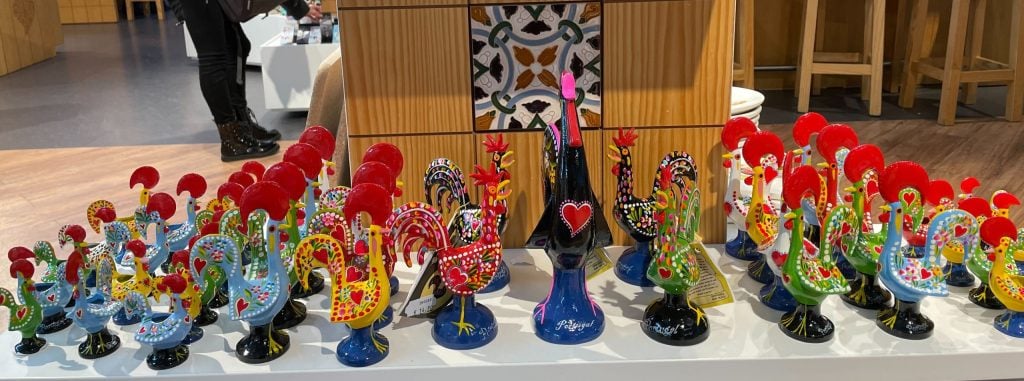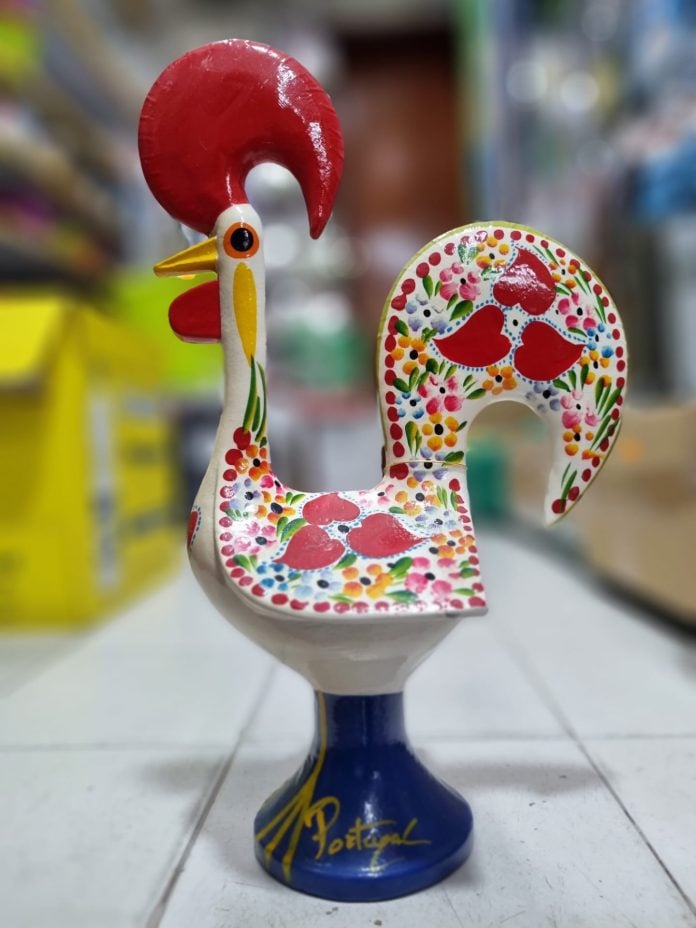Barcelos is an ancient Portuguese city from the 12th century, in Braga District in the Minho Province, in the north of Portugal and is part of one of the many Ways to Santiago used in Portugal.
Legend has it that in the Middle Ages, in Barcelos, a robbery took place, and the inhabitants were restless because the culprit could not be found. One night, a Galician pilgrim on his way to Santiago de Compostela decided to stay overnight in a local hostel and was reported as a criminal to the judge by one of the inhabitants. The authorities decided to arrest him and, despite his oaths of innocence, nobody believed that the Galician was on his way to Santiago de Compostela to fulfill a promise and that he was a fervent devotee of Santiago, Saint Paul and Our Lady of Fatima. The pilgrim was arrested and later sentenced to hang. On the day of his hanging, the pilgrim asked, as his last wish, to go and speak to the judge. Brought before the judge, who was having a banquet with some friends at the time, the condemned man knelt down and insisted on his innocence, begging not to be hanged.

Since no one believed him, the pilgrim pointed to the roasted rooster on the table and said:
“It is as certain I am innocent as that rooster crows when they hang me!”
Everyone around the table laughed at the statement. Later, to everyone’s amazement, legend has it that, the rooster stood up and crowed. What seemed impossible, however, became reality!
The judge ran to the gallows to prevent the hanging, and when he saw that the rope knot prevented the strangulation, he immediately had the rooster released, letting the pilgrim leave in peace, in the direction of Santiago de Compostela.
A few years later, the pilgrim returned to Barcelos and erected a monument in honor of Santiago and the Virgin Mary, since he assumed that Santiago had protected him from the gallows.
This legend is said to have passed from generation to generation, until today, and over time the figure of the Barcelos rooster has undergone modifications, until it became the colored image, and is today, one of the symbols of Portugal.


